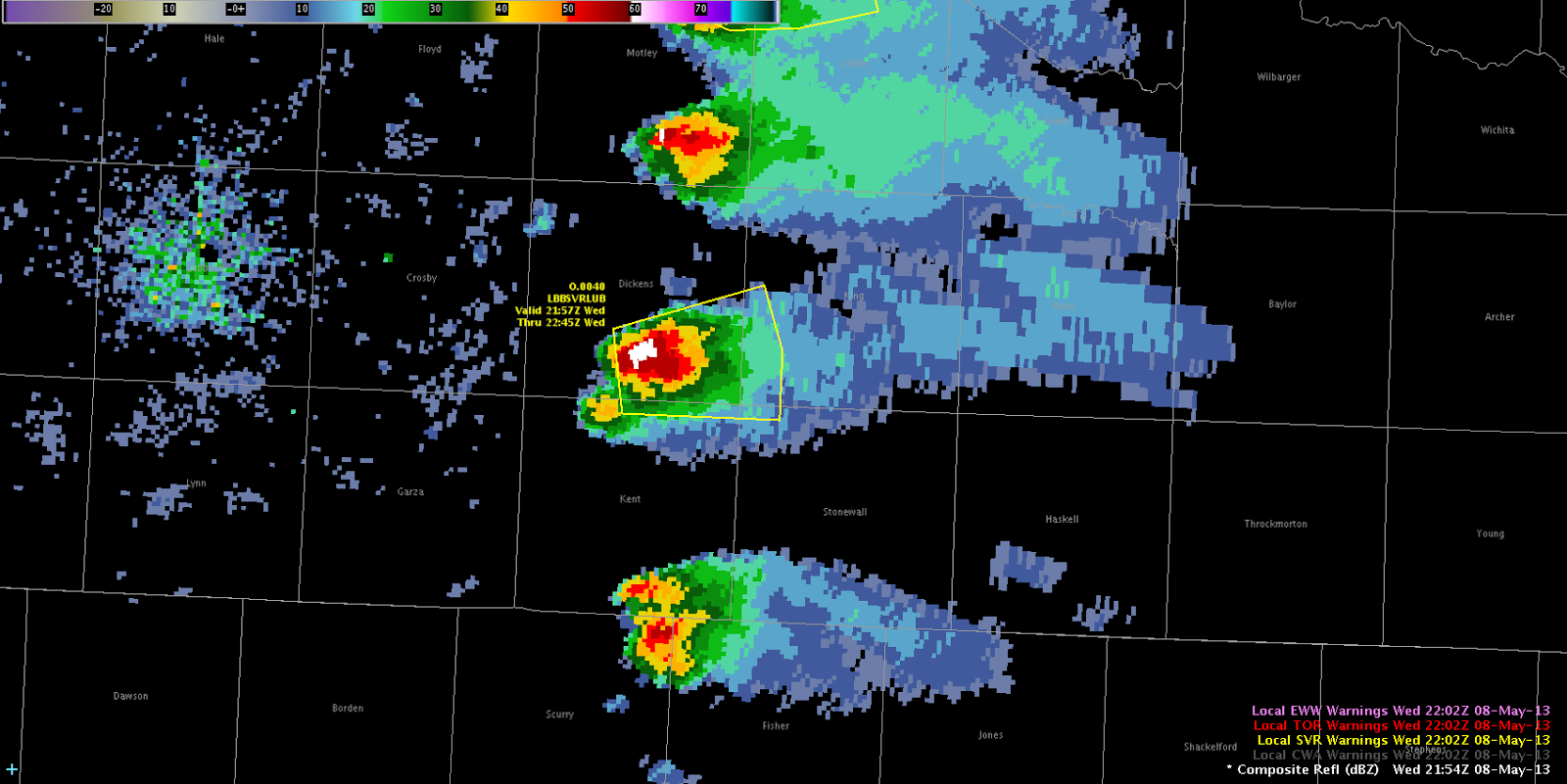 |
ASPB and CIMSS Weekly Report
[ Archive ] |
 |
ASPB AND CIMSS WEEKLY HIGHLIGHTS FOR THE WEEK ENDING MAY 11, 2013
IN THE PRESS:
ITEMS FOR THE ADMINISTRATOR:
ITEMS FOR THE ASSISTANT ADMINISTRATOR:
ITEMS FOR THE OFFICE DIRECTOR, STAR:
CIMSS Participates in 2013 NOAA Hazardous Weather Testbed:
Cooperative Institute for Meteorological Satellite Studies (CIMSS)
scientists participated in activities during the first week of the 2013
NOAA Hazardous Weather Testbed (HWT) in support of GOES-R related
products created at CIMSS/SSEC (Space Science and Engineering Center).
In particular, the University of Wisconsin Cloud-Top Cooling and Nearcast
products were evaluated by the forecasters participating in the HWT.
Forecasters found both products to be highly useful when environments
were supportive of significant convection and void of thick cirrus
contamination. Additionally, forecasters were able to issue effective
experimental warnings based on prior experience and the additional
information provided by the satellite-based products. Participation in
the HWT has occurred over the past five years and has lead to major
improvements to the algorithms shared based on excellent forecaster
feedback. (L. Cronce, CIMSS, 608-265-6282)
 (Click image to enlarge)
(Click image to enlarge)
Figure caption: Experimental severe thunderstorm warning issued based on
the additional information from the University of Wisconsin Cloud-Top
Cooling product.
JPSS Risk Reduction Daytime Cloud Properties CDR: A
Critical Design Review (CDR) for the daytime cloud optical and
microphysical properties algorithm of the Joint Polar Satellite System
(JPSS) Risk Reduction project "Uniform Multi-Sensor Algorithms for
Consistent Products" was held this week. The cloud properties algorithm was developed for GOES-R but has
been modified extensively to exploit the additional near-infrared
channels on the Visible Infrared Imaging Radiometer Suite (VIIRS). No
issues were raised during the CDR. (A. Walther, CIMSS, 608-890-1990,
andi.walther@ssec.wisc.edu)
ITEMS FOR THE DIVISION CHIEF, CoRP:
CIMSS Cooperative Agreement Annual Report: The Annual Report on programs funded through the Cooperative Institute for Meteorological Satellite Studies (CIMSS) Cooperative Agreement was submitted to NOAA/NESDIS on 29 April 2013. The 355 page document includes scientific reports on 90 individual projects from 41 funded proposals during the period 1 April 2012 through 31 March 2013. The Report also includes a Director's Executive Summary, and Appendices with information on staff, students, visitors, awards, and publications. (T. Achtor, CIMSS, 608-263-4206) (S. Ackerman, CIMSS, 608-263-3647) (W. Feltz, CIMSS, 608-265-6283)
UW-Cloup Top Cooling Presentation to NWS Office: J. Sieglaff delivered a remote presentation about the University of Wisconsin-Cloud Top Cooling (UW-CTC) algorithm to the Gray/Portland, Maine National Weather Service (NWS) office as part of their spring workshop. The UW-CTC algorithm processes GOES Imager data to diagnose the vigor of developing thunderstorms. The UW-CTC is used by various NWS offices and experiments to aid forecasters convective storm responsibilities--such as severe thunderstorm warning issuance. The Gray/Portland NWS office will begin to ingest the UW-CTC products in real-time for evaluation and feedback to developers at UW-CIMSS. (J. Sieglaff, CIMSS, 608-265-5357)
CIMSS Science Symposium: The Cooperative Institute for Meteorological Satellite Studies (CIMSS) held a science symposium on May 6, 2013 with an agenda that included six presentations. Hank Revercomb, Dave Tobin and Liam Gumley provided an overview of the status and plans for GeoMetWatch, which is a new private industry initiative to launch a satellite system that includes geostationary hyperspectral infrared sounders. A discussion of the University of Wisconsin Sea Grant Program was given by James Hurley. Andrew Heidinger spoke on the opportunities and challenges in reprocessing NOAA's multi-decadal satellite data. Kathy Strabala lectured on the successes of the direct broadcast activity going on at CIMSS. Jeff Key concluded the symposium by giving his perspective on the efficacy and value of international bodies in coordinating Arctic observations and research. (A. Heidinger, E/RA2, 608-263-6757, andrew.heidinger@noaa.gov; S. Ackerman, CIMSS, 608-263-3647)
Comments on the GOES-R GRB Simulator Guide: The Advanced Satellite Products Branch (ASPB) and the Space Science and Engineering Center (SSEC) provided comments on the Geostationary Operational Environmental Satellite (GOES)-R Rebroadcast (GRB) Simulator (GRBSM) Operator Manual and User Guide. The GRB simulator is a piece hardware that simulates the GRB datastream, including simulated Advanced Baseline Imager (ABI) data provided by the GOES-R Imagery and Proxy Algorithm Working Group (AWG) at Cooperative Institute for Meteorological Satellite Studies (CIMSS). (T. Schmit, E/RA2, 608-263-0291, tim.j.schmit@noaa.gov; W. Straka III, CIMSS)
GRAFIIR Team Responds to GOES-R PWG: Scientists at the Cooperative Institute for Meteorological Satellite Studies (CIMSS) responded to questions of a "what-if" scenario for noise exceeding specifications with the Advanced Baseline Imager (ABI) for the Geostationary Operational Environmental Satellite (GOES)-R series. ABI Proxy data for the 6.2 micrometer water vapor viewing band was used to simulate what the effect of having a noisy detector (affecting a few lines in an image) would be on imagery and soundings products. The GOES-R Analysis Facility for Instrument Impacts on Requirements (GRAFIIR) team provided a short report of their analysis to the GOES-R Product Working Group (PWG). (M. Gunshor, CIMSS, 608-263-1146, T. Schmit, E/RA2, 608-263-0291, tim.j.schmit@noaa.gov)
VISITORS:
NEXT WEEK:
LOOKING AHEAD:




 (Click image to enlarge)
(Click image to enlarge)